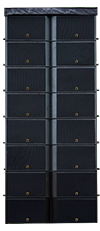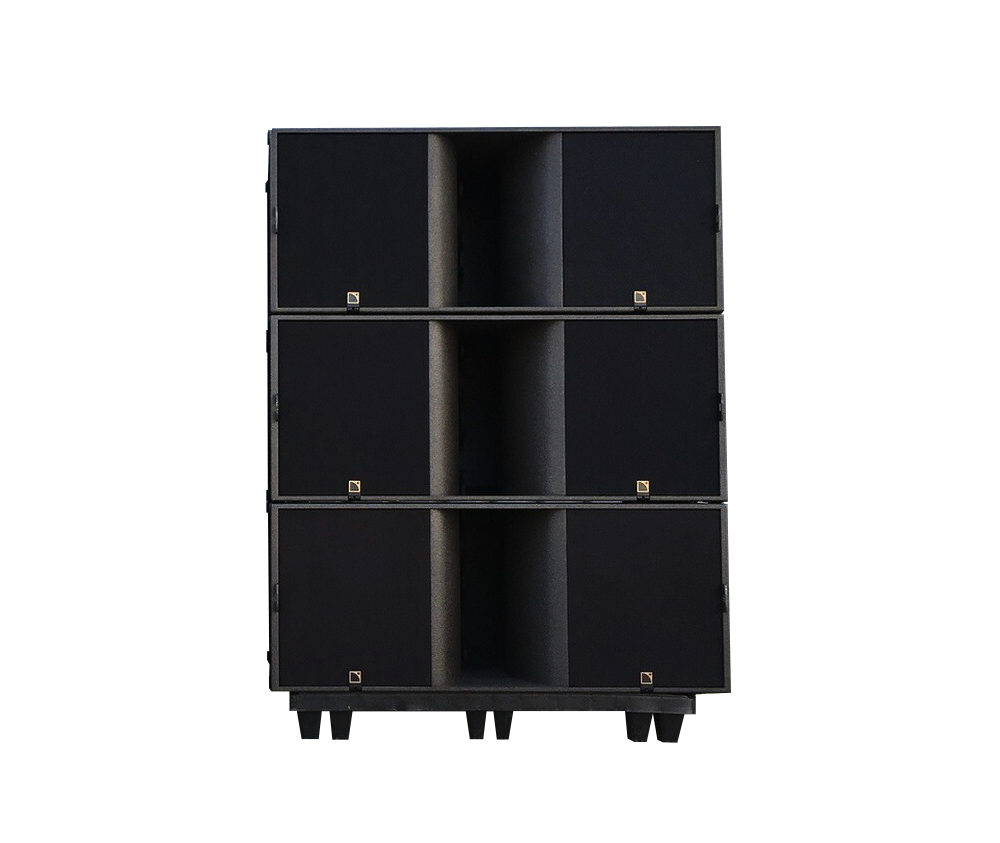Theatre stage design: Key elements, materials, rental services
Apr 04, 2025
Theatre stage design is the art of transforming a space into an immersive world that enhances storytelling and captivates audiences. From intricate set pieces to dynamic lighting, every detail contributes to the overall visual impact of a performance. But what are the key factors that make a stage design genuinely effective?
This article’ll explore the fundamental elements, commonly used materials, and professional rental services that bring creative visions to life.
The importance of theatre stage design
Theatre stage design plays a crucial role in shaping the audience’s experience, enhancing storytelling, and bringing performances to life. More than just a backdrop, a well-designed stage creates the right atmosphere, supports actors' movements, and guides the audience’s focus.
Through strategic use of lighting, color schemes, textures, and set pieces, stage design helps establish time and place while reinforcing the emotional tone of a production. A functional layout ensures smooth actor movement and interaction with the set, making performances more dynamic and engaging.
Additionally, thoughtful design choices direct the audience’s attention to key moments, enhancing the overall impact of a scene. High-quality stage construction and innovative visual effects also contribute to the professionalism and appeal of a production, leaving a lasting impression.
Ultimately, theatre stage design is essential for creating immersive, visually stunning, and emotionally resonant performances.

The importance of theatre stage design
Key components of theatre stage design
A well-executed theatre stage design consists of several essential components that work together to create an immersive and visually compelling performance. Each element plays a crucial role in enhancing storytelling and audience engagement.
Stage layout and dimensions
The physical space where performances unfold is the foundation of stage design. A well-optimized stage layout ensures smooth performer movement and audience visibility, creating an engaging and seamless experience. Theatres commonly adopt one of several classic stage formats, each offering unique advantages.
The proscenium stage, with its framed opening, establishes a clear separation between performers and the audience, making it ideal for large productions. Thrust stages extend into the audience on three sides, fostering a sense of intimacy, while arena stages - or theatre-in-the-round - immerse actors within the audience, heightening engagement. Black box theatres, with their flexible and adaptable spaces, offer creative freedom for experimental performances.
Lighting design
Lighting is one of the most powerful tools in theatre stage design, shaping the mood, guiding audience attention, and enhancing the visual impact of a performance. Modern intelligent lighting systems allow for dynamic color changes, seamless spotlight transitions, and intricate special effects.
Through strategic lighting and stage design choices, designers can simulate time changes, highlight key characters, or evoke deep emotional responses. A well-balanced lighting plan aligns with the rhythm of the performance, ensuring that every scene is visually striking and effectively communicates the intended atmosphere.

Lighting is one of the most powerful tools in theatre stage design
Sound system
A high-quality sound system is essential for delivering clear dialogue, immersive sound effects, and powerful musical compositions. Proper acoustic treatment and strategic speaker placement ensure that every word and note reaches the audience without distortion or dead spots. Advanced digital audio systems provide precise control over sound levels, while state-of-the-art mixing consoles allow for real-time adjustments during live performances.
Additionally, sophisticated microphone technology, including wireless and directional mics, ensures that actors' voices remain clear regardless of their movement across the stage. By seamlessly integrating sound design with visual elements, theatre productions create a cohesive and immersive sensory experience.
Set design
More than just a backdrop, a well-crafted set is an interactive space that enhances storytelling. Designers prioritize authenticity for period pieces, innovation for abstract concepts, and flexibility for seamless scene transitions.
The choice of materials, textures, and architectural elements brings the script to life, ensuring that every prop and structural component supports the overall narrative. Whether minimalist or elaborate, a well-designed set enriches the theatrical experience by making the performance environment feel immersive and believable.
Subtitle screens
In today’s diverse theatre landscape, subtitle screens play an essential role in improving accessibility and expanding audience reach. These screens display live translations or captions, allowing non-native speakers and individuals with hearing impairments to fully engage with the performance.
Positioned strategically around the venue, they ensure that language barriers do not limit the storytelling experience. Incorporating subtitle screens into stage design enhances inclusivity, making theatre more accessible to a broader audience.

Subtitle screens in theatre stage design
Scenic elements in theatre stage design
Scenic elements are essential components of theatre stage design, creating depth, atmosphere, and context for a performance. These elements transform an empty stage into a rich, immersive environment that supports the narrative and enhances audience engagement.
Key scenic components include platforms and levels, backdrops and curtains, as well as furniture and props, all of which work together to bring a production’s setting to life.
Platforms, stairs, and levels
The use of platforms, stairs, and multi-level structures adds dimension to the stage, creating visual interest and dynamic movement for actors. Platforms help define different acting areas, distinguishing various locations within a single scene or play.
Stairs serve both practical and symbolic purposes, allowing performers to transition smoothly between levels while also representing features like grand staircases, rooftops, or underground spaces.
Multi-level designs can create a sense of power dynamics between characters, drawing attention to key moments and interactions. By incorporating varied elevations, set designers enhance the spatial depth of the performance, making the stage feel larger and more dynamic.
Backdrops, curtains
Backdrops and curtains play a critical role in shaping the visual world of a production. Painted backdrops serve as scenic representations, depicting landscapes, cityscapes, or abstract designs that transport the audience to different settings. Cycloramas (cycs) - large, curved fabric panels - are often used as neutral backgrounds that can be illuminated with colored lighting to evoke different moods.
Stage curtains not only frame the performance space but also allow for seamless scene changes by masking backstage areas or revealing key elements of the set at pivotal moments. These scenic tools help shift the tone of a production and create smooth transitions between different scenes.

Backdrops and curtains play a critical role in shaping the visual world of a production
Furniture and props
Furniture and props complete the stage environment, adding realism and authenticity to the performance. Set designers carefully select furniture pieces to reflect the play’s period, location, and thematic elements. Whether it’s a grand Victorian armchair or a minimalist modern table, these elements subtly communicate the setting to the audience.
Props, both large and small, further enrich the storytelling by providing actors with objects to interact with, such as books, lanterns, or personal accessories, that add layers of detail to the characters and scenes. Every item on stage is chosen with purpose, reinforcing the world of the play and making it feel fully realized.
Common materials used in stage design
Selecting the right materials is crucial for building durable, functional, and visually appealing theatre sets. The materials used in stage design must balance aesthetics, structural integrity, and practical considerations such as budget and ease of construction.
Wood
Wood is one of the most versatile and widely used materials in stage design. Plywood, timber, and MDF (medium-density fiberboard) are frequently chosen for constructing platforms, stairs, walls, and structural frameworks. Wood is favored for its ease of manipulation, allowing set builders to cut, carve, and shape it using basic carpentry tools.
Additionally, wood can be painted or textured to mimic other materials, such as stone, brick, or metal, making it an essential component in creating realistic stage environments. Its lightweight nature, compared to metals, also allows for quick assembly and modifications during rehearsals and performances.

Common materials used in stage design
Steel
Steel is used when maximum strength and durability are required, especially for multi-level sets or complex structures. It is commonly utilized in building platforms, support frames, ladders, and railings that need to withstand significant weight and are frequently used.
Unlike wood, steel requires welding and specialized fabrication techniques, making it a more labor-intensive material. However, its high load-bearing capacity and longevity make it a preferred choice for sets that need to be reused or transported between venues.
The sleek, industrial look of exposed steel is sometimes incorporated into modern stage designs to create a contemporary aesthetic.
Fiberglass
Fiberglass is a lightweight yet sturdy material used for creating translucent or uniquely shaped set pieces. Unlike wood or steel, fiberglass can be molded into organic, curved, or intricate designs, making it ideal for futuristic or fantastical stage settings. It is often used for sculptural elements, props, or faux architectural details.
Additionally, fiberglass can be painted and finished to resemble materials like glass, stone, or metal, offering a cost-effective alternative to heavier or more expensive materials. Since it is relatively lightweight, fiberglass is also advantageous for mobile or touring productions that require easy transportation.
Paint, dyes, and textiles
Color and texture are fundamental in stage design, and various painting and fabric treatments help bring theatrical environments to life. Painted backdrops and set pieces transport audiences to different worlds, from historical settings to abstract landscapes.
Techniques such as sponging, stippling, and airbrushing allow scenic artists to create depth and realism. Dyes are used to color fabrics like muslin, transforming them into stone walls, dense forests, or vibrant skies.
Textiles, including velvet curtains, burlap drapes, and netted scrims, add depth and softness to stage environments, helping to create mood and atmosphere. The strategic use of colors and materials can dramatically alter the perception of space on stage.
Sustainable materials
With increasing awareness of environmental impact, many productions are adopting sustainable materials and construction methods. Bamboo, a fast-growing and renewable resource, is being used as a substitute for traditional wood. Recycled plastics and composite materials reduce waste while offering durability.
Low-VOC (volatile organic compound) paints improve indoor air quality and minimize harmful emissions. Digital printing technology allows for the creation of highly detailed backdrops without excessive material waste. Incorporating eco-friendly materials not only supports sustainability efforts but also offers long-term cost savings for theatre productions.

Sustainable materials
Stage design and equipment rental services by AV Vietnam
At AV Vietnam, we specialize in creating immersive stage designs and providing high-quality event equipment rentals to bring performances and events to life. Whether for corporate events, concerts, or theatrical productions, our comprehensive services ensure a seamless and visually striking stage experience.
Our stage design solutions are tailored to meet the unique needs of each production. We offer custom layouts, modular platforms, professional lighting and sound systems, and high-quality backdrops. Every element is designed to enhance storytelling and audience engagement while ensuring smooth transitions and structural stability.
In addition to design, we provide a full range of rental equipment, including advanced lighting systems, professional sound setups, LED stage screens, and special effects gear. Our rental services come with flexible packages and on-site technical support, ensuring flawless execution for any event.

Stage design and equipment rental services by AV Vietnam
With expertise and cutting-edge technology, AV Vietnam is committed to delivering exceptional stage solutions. Contact us today via hotline (+84) 939 311 911 to discuss your project and let us transform your event into an unforgettable experience.






